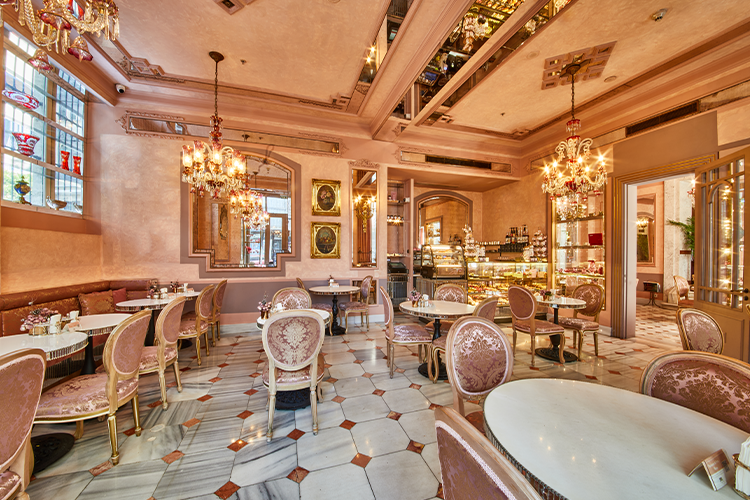History of Yeşilçam Street and Its Contributions to Beyoğlu
Yeşilçam Street is a street located in the Beyoğlu district of Istanbul close to Taksim. In the period before the 1980s, Turkish cinema began to be known as Yeşilçam, as the offices of the majority of film companies were located on this street.
In 1948, when the Municipal Revenue Act reduced the tax from 75% for domestic films to 25%, producers realized the possibility of making money and began to set up their company offices in Yeşilçam Street. It is noticed that there is a serious increase in the domestic film industry during these periods. Turkish cinema, which produces 50 films in 10 years under normal conditions, started to reach this number in 1 year. The 1950s are the first great years of Turkish cinema. Yeşilçam Street has been the heart of Turkish cinema for nearly 30 years and has enabled the art of cinema to settle in Turkey.
The Oldest Cinema of the Republic Period
Emek Cinema is the oldest cinema hall of the Republican era. Since 2013, the Emek Cinema has been restored as part of the Grand Pera project, which covers the Cercle d’orient complex, and today it is located in this shopping and performing arts center under the name “Emek Sahnesi”.
The building where Emek Cinema is located on Yeşilçam Street was used for other purposes before it became a cinema. It’s built-in 1884 by architect Alexandre Vallaury and first opened under the name “Club des Chasseurs de Constantinople”, the building was then home to Strangali’s Greek Athletic Gymnastics, followed by the “Nouveau Cirque” in 1910, and then the “Skating Palace”.
In 1918, the existing building was demolished and the “New Theater” was built in its place, and at the end of 1924, film screenings began here under the name of “Melek Cinema”. Emek Cinema takes its name from the Art Nouveau-style angel sculptures on both sides of the curtain. The historical identity of Emek Cinema was different from other movie theaters with its gilded ceilings and walls, 875 seat halls, and historical past. The cinema building was demolished on 20 May 2013 for restoration within the scope of the Grand Pera project.
Atatürk on Yeşilçam Street
Once upon a time, there was an Opera Cinema on Yeşilçam Street, which is not open today. It was founded by Kadri Cemali Sümer Bey, who also had cinemas in Beyoğlu and known as “Filmmaker Kadri Bey”. The building of the cinema, which was opened with a great ceremony in 1938, was so beautiful that it made a name as the most beautiful building in the Balkans at that time.
Atatürk came to this cinema to watch the British film Çanakkale and was very impressed by the theatre. Receiving information about the situation of the cinema industry in Turkey, Atatürk reduced cinema taxes from 33% to 10%. Atatürk came to the Opera Theater many times in the following years. Opera Cinema, which later moved to the City Theaters, was rented to a clothing store and closed at the end of the 1970s as a result of a fire.
Yeşilçam Street’s Contribution to Turkish Cinema
One of the most interesting features of the 1950s period is the filming of novels that are called ”market novels”. Kerime Nadir, Muazzez Tahsin, Esat Mahmut can be given as examples to these adaptations. Such films are films that deal with daily life in Istanbul in a “shapeless modernizing” style to some extent. Adaptations of market novels, which became widespread between 1950 and 1960, impressed marks in Turkish cinema, and even today it is possible to see the traces of those years in cinema.
The ten-year period between 1950 and 1960 is of great importance for Turkish social realism. The solid foundations were laid for Turkish national cinema between 1948-1959 years. Apart from melodramas and theatre plays, the concept of cinema was first formed in these years. Three factors among the great developments experienced in this period are important in terms of establishing the infrastructure that will enable the emergence of a social realistic cinema. These elements can be listed as follows:
- The emergence of a new cinema industry, which we know as Yeşilçam, and thus a large increase in the number of cinema and cinema halls.
- The emergence of a new generation of directors who are enthusiastic and talented to make films, and the emergence of new searches such as “Film Noir” or “Village Movie”
- Cinema criticism started to take place in serious magazines, cinema organizations, and cinema publishing increased
In addition, it has been ensured that cinema becomes a professional profession and for this purpose, directors, actors, and technical teams are trained more organized. In a sense, it can be said that Yeşilçam Street provided an infrastructure for cinema.
These articles may also be of interest to you:
Places to Take Amazing Photos in Beyoğlu
Beautiful Stories About Old Beyoğlu
A Warm Glance at Beyoğlu: Activity Suggestions So That You Can Enjoy the Summer



